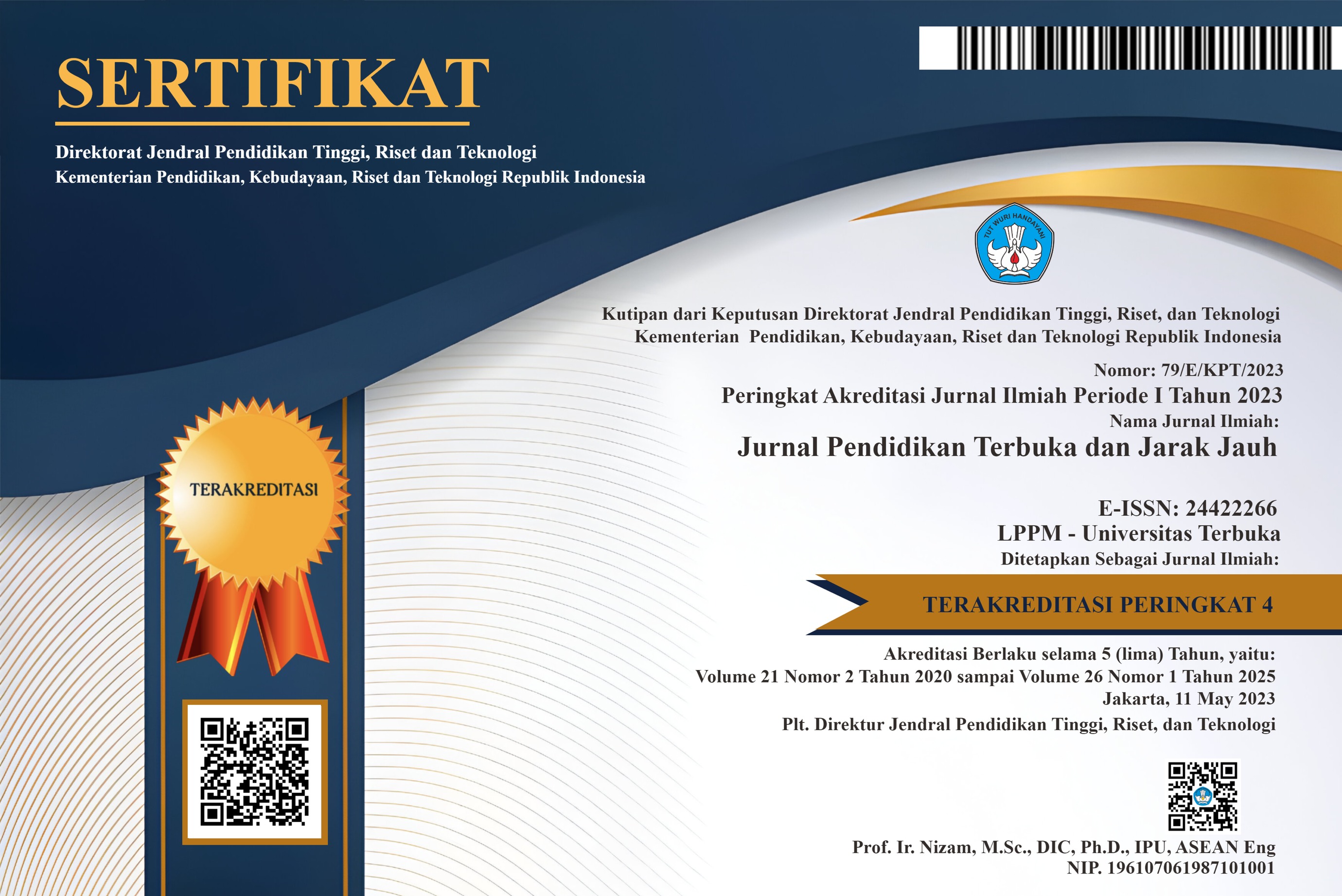PEMANFAATAN OPEN EDUCATIONAL RESOURCES (OER) DALAM TUTORIAL ONLINE
DOI:
https://doi.org/10.33830/ptjj.v19i2.321.2018Keywords:
Distance Learning, Open Educational Resources, online tutorials, translationAbstract
This article aims to present the results of analysis of the problems associated with the use of Open Educational Resources (OER) in the online tutorial at the Department of English Literature at Universitas Terbuka (UT). The method used is descriptive method to describe the actual situation in the presentation of the data and evaluate them to find answers to the research questions. The collected data have been described and studied in depth in order to obtain a greater understanding of research purposes. The research approach is a qualitative and quantitative approach. Merging the two approaches is the best way for each approach will be complementary. The data used is a questionnaire with closed questions and interviews. The findings indicate that OER contributes significantly in online tutorial and helps the participants to comprehend the material.
References
Condelly, L. (2004). Real World Research: Combining Qualitative and Quantitative Research for Adult ESL. Washington, DC. USA.
Daryono & Belawati, Tian. (2013). Prospects and Challenges for Introducing Open Educational Resources in Indonesia. Dalam PERSPECTIVES ON OPEN AND DISTANCE LEARNING: Open Educational Resources: An Asian Perspective. https://oerknowledgecloud.org/sites/oerknowledgecloud.org/files/pub_PS_OER_Asia_web.pdf
Deimann, Markus & Farrow, Robert. (2015). Rethinking OER and their Use : Open Education as Bildung. FernUniversitaet in Hagen, Germany, 2The Open University UK http://oro.open.ac.uk/36572/1/Deimann%20%26%20Farrow.pdf
Downes, Stephen, (2013). The Role of Open Educational Resources in Personal Learning. National Research Council of Canada. https://s3.amazonaws.com/academia.edu.documents/31833499/pub_PS_OER-IRP_web.pdf?AWSAccessKeyId=AKIAIWOWYYGZ2Y53UL3A&Expires=1548304589&Signature=E0%2FwHVicl5UxiZMfELj2uH7I%2FI0%3D&response-content-disposition=inline%3B%20filename%3DOpen_Educational_Resources_Innovation_Re.pdf#page=233.
Friesen, N. (2013). Realising the Open in Open Educational Resources: Practical Concerns and Solutions. Perspectives on Open and Distance Leraning: Open Educational Resources: Innovation, Research and Practice. Vancouver: Athabasca University.
Puspitasari, K.A. (2002). Layanan Bantuan Bagi Mahasiswa Universitas Terbuka. Buku: Pendidikan Terbuka dan Jarak Jauh, hal. 315-333. Jakarta: Universitas Terbuka.
McGreal, R. (2013). Open Educational Resources University: An Assessment and Credit for Students Initiative. Perspectives on Open and Distance Leraning: Open Educational Resources: Innovation, Research and Practice. Vancouver: Athabasca University.
Universitas Terbuka. (2004). Pedoman Penyelenggaraan Tutorial Online. Jakarta: Universitas Terbuka.





